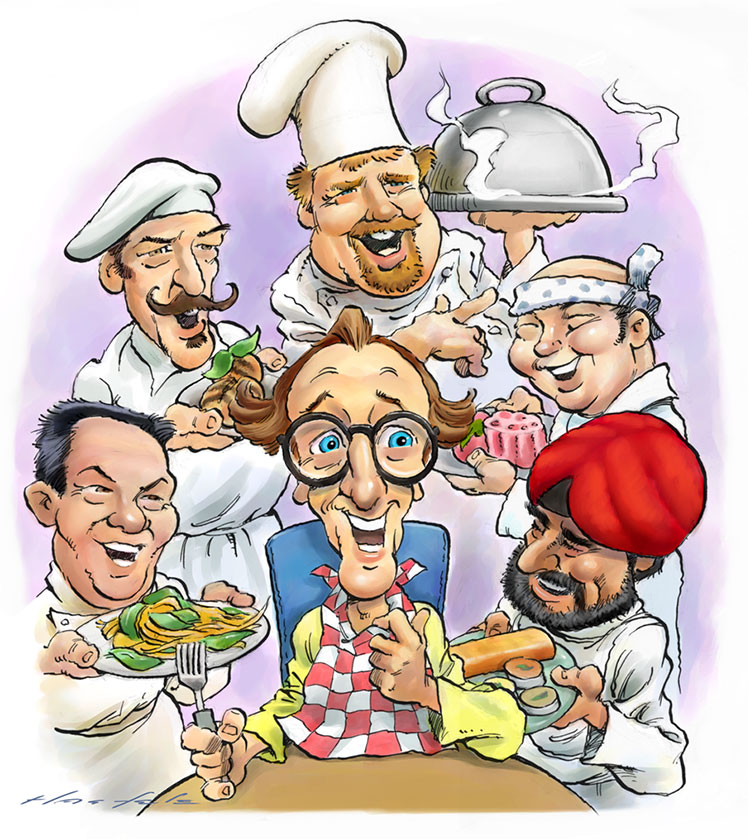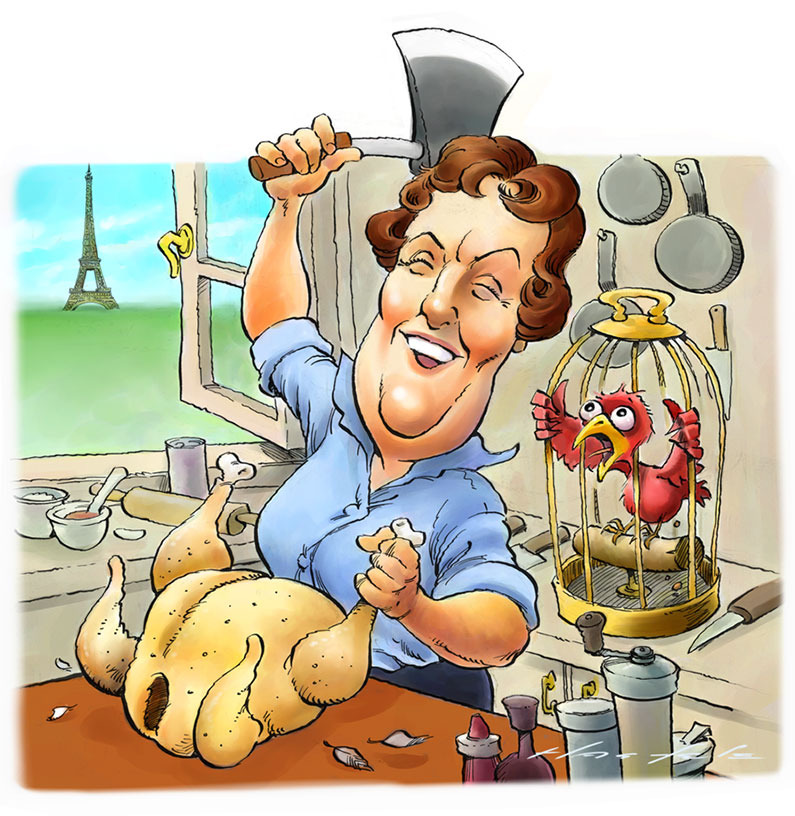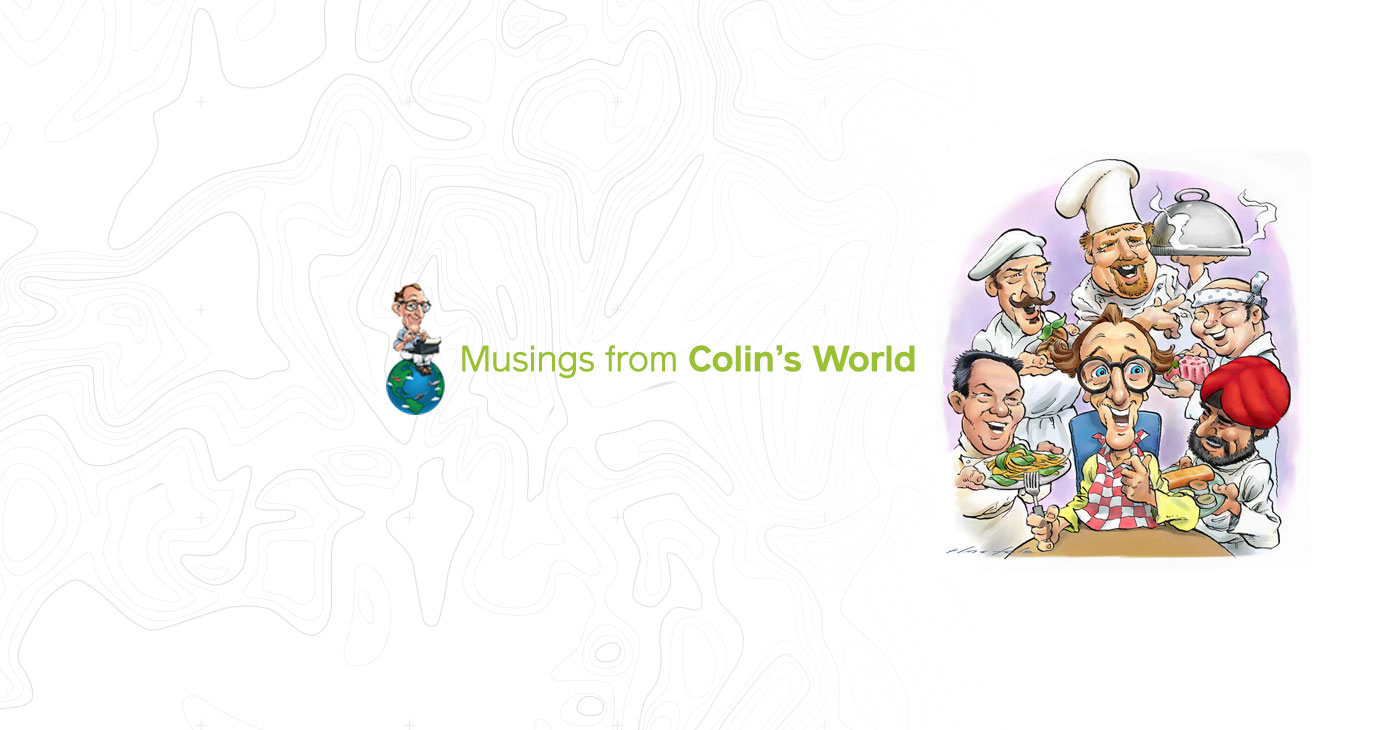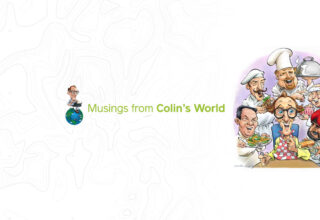Years ago a friend spoke disdainfully about the rising trend of culinary tourism. He was a little jaded, oversensitive to commercialism. When he thought of the “foodie” trend, he imagined an itinerary that bypasses the Colosseum in favor of grabbing a slice of margherita pizza. To him it was part of a depressing trend of dumbing down, going for the lowest common denominator to snag a mass market. But the culinary travel trend has proven him wrong. I have come to see culinary tourism as one of the highest forms of cultural tourism. It can be anyway.

Aw, but you might ask: Is the art of cuisine comparable to painting, architecture, sculpture, music and dance? Does it have the historical weight of the Beaches of Normandy, or the Vatican? Well, I think the argument could be made that it is of comparable weight in the scale of human values. In many ways it is the most universal cultural artifact of all. It can be enjoyed on many levels: intellectual, aesthetic, tactile, olfactory. After all, you can look at the Mona Lisa, but you can’t touch it. You certainly can’t eat it.
I am continually amazed at the evolution of American society’s attitudes toward food. I am not observing from outside. The wave has swept me along with it. It hit me broadside in the beginning. I was extremely primitive in regard to food. I’m not saying I’m particularly sophisticated now, but I have learned to enjoy it on levels I didn’t know existed.
The rise of food consciousness in America can be viewed through the life story of Julia Child. She was one of the most unlikely of celebrities, and an even less likely historical figure. But if you’ve picked up on any of the biopics about her, you may have seen how her life parallels the change of attitudes toward food in America.
The America I grew up in, in the Midwest, was rather dour when it came to food, though I didn’t know it. I ate a lot of processed foods, loaded with sugar, artificial coloring, preservatives, stabilizers and junk. I fed on packaged food, sold for convenience, not nutrition, or even much for enjoyment. Eating was the mere satisfaction of a need, not a pleasurable experience. Looking back on some of my fast food experiences, they weren’t much more than lining up at the trough. And I wasn’t atypical.
That was the America Julia Child encountered when returning to the United States after World War II, after she worked in the U.S. Office of Strategic Services in Sri Lanka and China, then lived in France and around Europe for a decade following the war. It’s one of those stories of a traveler bringing home discoveries from abroad, where they are rare and precious, and spur new ways of thinking.
The idea that such a tall, unglamorous woman, who demonstrated French cooking, would rise to celebrity status would have been a big laugh, to her more than anyone. But somehow her timing was right, and she clicked into a cultural trend of postwar America. Her books and TV appearances helped fuel the trend. Fast forward to 2024, the range of enjoyment available now in terms of cuisine is vastly broadened.

Rise of Culinary Tourism
The same wave of cultural change fueled a growing interest in culinary experiences when traveling abroad. In response, culinary tourism has continued to evolve. Restaurants, vineyards, distilleries, tour operators and others have developed innovative ways of incorporating enriching culinary experiences into travel experiences. The companies have cultivated best practices, and continue to refine their offerings. Now everywhere you go there’s a sharper focus on cuisine. Besides great meals, and waiters who teach you about what you are eating, there are tastings, tours of wineries and distilleries, and cooking classes available everywhere.
I see it as a good thing. Food – the efforts to obtain it, its history, the development of methods of preparing it, and the rituals that have food at their center – those things are not trite, and they’re not base. They aren’t extraneous to culture. They are the very cornerstone of culture.
I am convinced that food, in all its aspects, is one of the highest of human creations, certainly one of the most enjoyable. It is an immediate and constant need of human beings, and perhaps it’s because it’s so ubiquitous that these various dimensions of cuisine may be invisible to us. Cuisine is at the foundation of the pyramid of human needs, but it can also be among the highest of human aspirations.
Food and drink are central to any social event. They are the glue, or the lubricant that bring groups of people together. Diplomacy is often referred to as “breaking bread.” The ritual of eating and drinking together is an essential cornerstone of social life, always part of people coming together to negotiate peace or to demonstrate friendship. The title of “foodie” itself sounds a shade derogatory, but there’s nothing more important in the world than food.
When traveling with a group, mealtime is when the group comes together and establishes its bonds of solidarity, a process that happens almost magically in every group united in a common quest, even if they start as strangers. The sharing of food is the ritual by which individuals meld into a family.
Food is a tangible, immediate cultural experience, and the medium for some of the most intimate human interaction. When you eat someone’s food in the country you are visiting, you are absorbing history, geography, craft, artistry, and love. All these things are incorporated into the food you are eating. You may need someone to point them out to you to get the full range of the experience. If it’s delicious, or visually arresting, you won’t need anyone to tell you that. But some of the subtler aspects, such as where it came from, the processes involved in bringing it to your plate, or its ingredients or nutrients may require some explanation to fully enjoy.
Some say the culinary arts mark the beginning of civilization. When could we say was the beginning of the culinary arts? Rebecca Rupp, in “A Brief History of Cooking with Fire” in National Geographic magazine, says that culinary arts in humans date back “roughly 2 million years ago.”
Since Homo sapiens are believed to have emerged maybe 260,000-350,000 years ago, and modern Homo sapiens only 100,000-150,000 years, it’s hard to say what we’re talking about when we refer to humans 2 million years ago. It’s clear however, that the culinary arts go way back even before the emergence of what we call Homo sapiens (that’s us).
How did it begin? We can only speculate, and when we do we are moving from anthropology into science fiction. Richard Wrangham, author of “Catching Fire: How Cooking Made Us Human,” theorized that primitive humans simply tossed a raw hunk of meat onto the flames of a campfire and watched it sizzle. That’s plausible enough. But many kinds of food preparations don’t require cooking. No matter. All we know is that the culinary arts go back to the dawn of humanity, no matter how little we know about that dawn.
Best Culinary Destinations
So, what are the best culinary destinations? That’s an individual matter, just as individual tastes differ in every other way. Every place has its food. Even if it has no museums, it has food. And every place has its own cuisine, in fact, many kinds of cuisine.
If you google “best culinary destinations,” you’ll get as wide a range as there are individual tastes. Many would say Italy, where the Mediterranean cuisine has developed to deliciously high-art standards. An obvious choice is France, well known for its great sophistication in matters of food and drink, and joie de vivre. Bangkok, New Orleans, Japan, India… It’s really infinite.
That’s one of the great things about cuisine, it is everywhere. It is perhaps the most democratic of art forms. Every time the hunger impulse arises, the best culinary destination is where you are.
Your humble reporter,
Colin Treadwell

